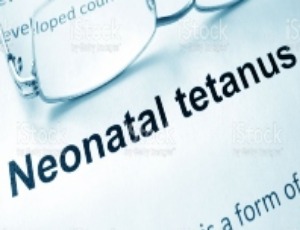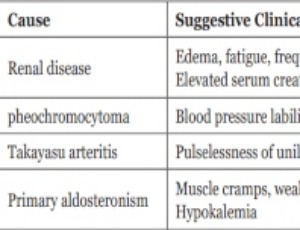Loading
Archives of Obstetrics and Gynaecology
ISSN: 2692-787X

2021
Volume 2, Issue 1, p1-23
Articles published in this issue are Open Access and licensed under Creative Commons Attribution License (CC BY NC) where the readers can reuse, download, distribute the article in whole or part by mentioning proper credits to the authors.
Intrauterine Device Embedment Resulting in Its Fracture: A Case Series
Carlos M. Fernandez, Elliot M. Levine, Marie Cabiya, Imaan Ansari, Leah Delfinado
As gynecologic providers continue to provide intrauterine devices (IUDs) for long-acting reversable contraception (LARC) with insertion of those devices, the associated complication rate needs to be well-understood, so that patients can make properly informed shared healthcare decisions.
Arch Obstet Gynecol, 2021, Volume 2, Issue 1, p1-4 | DOI: 10.33696/Gynaecology.2.009
Recommendation of Tetanus Toxoid Vaccination for Pregnant Females in a Country that Achieved Elimination of Maternal and Neonatal Tetanus. A commentary on the Study: Knowledge and Health Beliefs of Reproductive-age Women in Alexandria about Tetanus Toxoid Immunization
Azza A. Mehanna
The study “knowledge and health beliefs of reproductive-age women in Alexandria about tetanus toxoid immunization” has shed a new light on the attitude of obstetricians in Alexandria (Egypt) towards recommending tetanus toxoid vaccination to pregnant females.
Arch Obstet Gynecol, 2021, Volume 2, Issue 1, p5-8 | DOI: 10.33696/Gynaecology.2.010
Evaluation and Management of chronic Hypertension in Pregnancy
Sangeeta Yadav, Neeta Singh, Mandakini Pradhan
Chronic hypertension is present in 1-2% of pregnant women. Women with chronic hypertension are at an increased risk of maternal and perinatal complications when compared with normotensive women.
Arch Obstet Gynecol, 2021, Volume 2, Issue 1, p9-15 | DOI: 10.33696/Gynaecology.2.011
Neoadjuvant Chemotherapy Followed by Fertility Sparing Surgery in Stage 1B2 Cervical Cancer
JWM Aarts, PLM Zusterzeel
In 2020 we published a series of 18 patients who underwent neoadjuvant chemotherapy (NACT) and vaginal radical trachelectomy (VRT) as a fertility sparing alternative in stage 1B2 cervical cancer.
Arch Obstet Gynecol, 2021, Volume 2, Issue 1, p16-19 | DOI: 10.33696/Gynaecology.2.012
Gene Therapy for Sickle Cell Disease: Start of a New Era
Norman Ginsberg, Lee P Schulman
This manuscript reviews treatment of Sickle Cell disease over time. The application of allogeneic stem cells proved the sickle cell disease could be permanently corrected and cured but limited to those with a compatible donor.
Arch Obstet Gynecol, 2021, Volume 2, Issue 1, p20-23 | DOI: 10.33696/Gynaecology.2.013
Recommended Articles
Cardiac Stem Cell Therapy, Quo Vadis
Cardiovascular disease causes 30% of global mortality and is still the number one cause of death worldwide. A main patho-physiological process is the coronary disease leading to malperfusion and ischemic cardiac disease as well as cardiac infarction.
Evaluation and Management of chronic Hypertension in Pregnancy
Chronic hypertension is present in 1-2% of pregnant women. Women with chronic hypertension are at an increased risk of maternal and perinatal complications when compared with normotensive women.
Gene Therapy for Sickle Cell Disease: Start of a New Era
This manuscript reviews treatment of Sickle Cell disease over time. The application of allogeneic stem cells proved the sickle cell disease could be permanently corrected and cured but limited to those with a compatible donor.
Needed, Assays for “Fetal Hemoglobin levels” in RBCs: Fetomaternal Hemorrhage and Expanded Applications in Sickle Cell Disease Management Could Forge an Evolution in Cellular Diagnostics
Treatment of sickle cell disease (SCD) remains varied with only a minority of patients benefiting from stem cell transplant as a near cure. Others await the promise of more effective and less toxic treatments than hydroxyurea, especially children who are most susceptible to the morbidities and mortalities of SCD. The recent report of Hebert, Rakotoson et al. points to an evolution of in vitro diagnostics (IVD) testing of blood cells with the emerging need for cell-by-cell measurement of red blood cell (RBC) specific hemoglobin variant levels. The study further provides clinical validation as to the utility of measuring HbF content in RBCs of SCD patients, not just as a prognostic test, but likely serving as a companion diagnostic in phase 3 clinical trials of new SCD therapies.
Preventing Stroke in Sickle Cell Disease: 2021. The Role of Transcranial Doppler Ultrasound (TCD) When the Use of Transfusion is Problematic
While TCD is an indicator of risk, not a biopsy diagnosis (such as proof of cancer), at some point in the velocity spectrum the high velocity detected by TCD reaches what many believe is an unacceptable risk of stroke.
Phlebotomy in Congenital Erythrocytosis and in Sickle Cell Disease HbSC
The inherited haemoglobin disorders, including thalassemias and haemoglobinopathies, are the most common genetic diseases and the clinical laboratory is essential in the diagnosis. Haemoglobinopathies are monogenic disorders in the genes that encode globin chains that can lead to a defective globin production or a variant in the haemoglobin structure.
A Rare Blood Malignancy in a Genetic Hematological Disorder: Polycythemia Vera (PV) in Sickle Cell Disease (SCD)
To delineate the etiology, symptomatology, and treatment of Polycythemia Vera in adults with Sickle Cell Disease. The current review contains a review of the 4 case reports that we found on the topic. To our knowledge, no other case reports exist.
About Scientific Archives
Scientific Archives is a global publisher initiated with the mission of ensuring equal opportunity for accessing science to research community all over the world. Spreading research findings with great relevance to all channels without any barrier is our goal. We want to overcome the challenges of Open Access with ensured quality and transparency.
